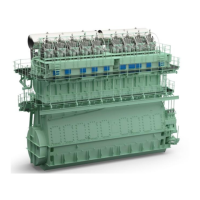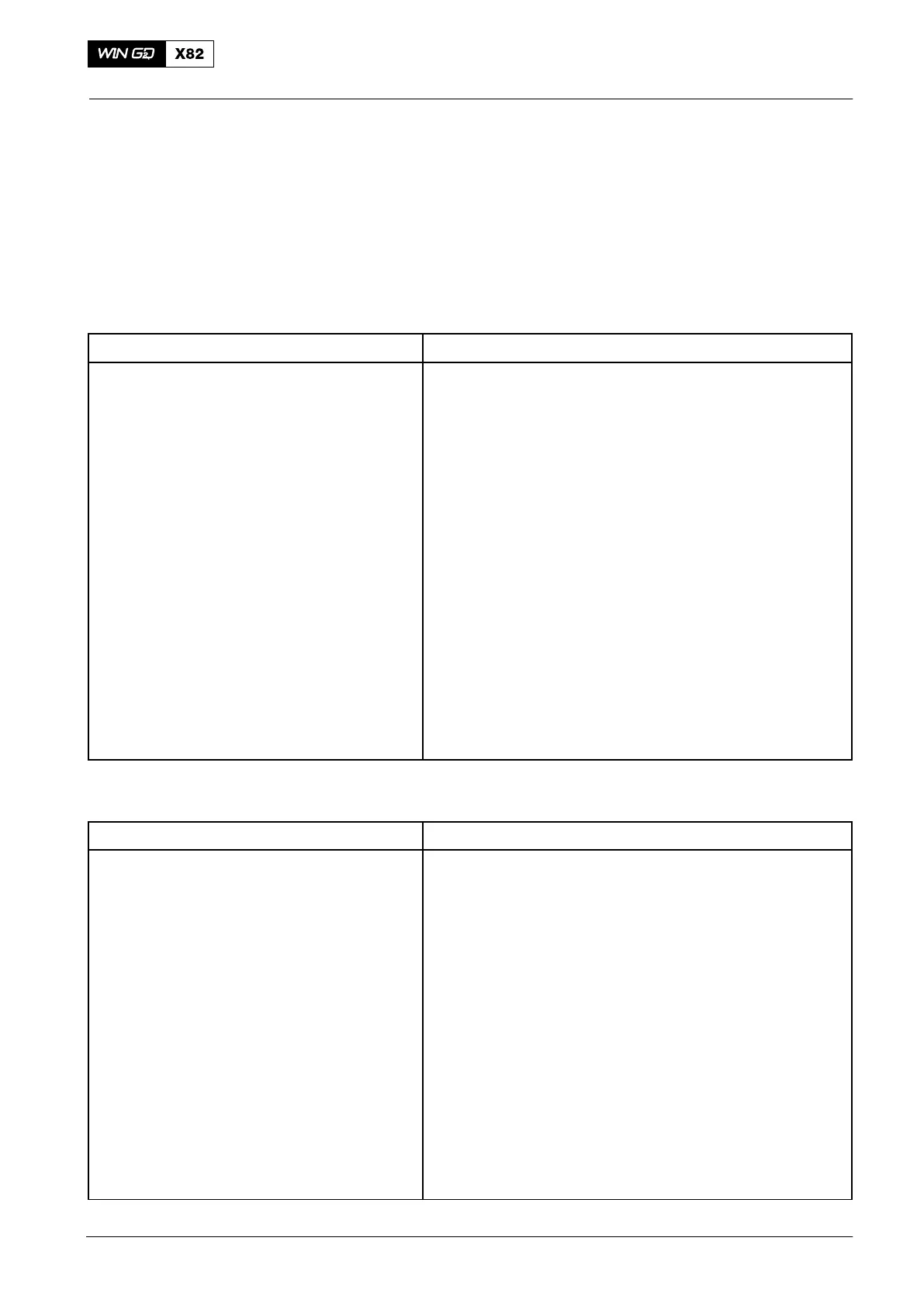Operation
0840−1/A1
Winterthur Gas & Diesel Ltd.
1/ 1
Irregular Operation
1. Piston − Hot Operation
The possible indications of a piston that operates at a temperature that is too hot, but
where combustion is correct are as follows:
D A temperature increase at the piston cooling oil outlet
D A temperature increase at the jacket cooling water outlet
D A temperature increase of the piston underside.
Possible Causes Repair Procedure
Gas flows through defective or worn piston
rings
There are scratches on the cylinder liner
surface because the cylinder lubricating oil has
decreased too much
Cut out the injection of related cylinder for a short time (see
0510−1, paragraph 1 Cut out the injection).
On the related cylinder, increase the feed rate of the cylinder
lubricating oil (see 4002−3 User Parameters and Mainten-
ance Settings paragraph 1 and paragraph 1.1).
If the temperature does not decrease, or increases more
after injection is cut in, cut out the injection again (see
0510−1). Stop the engine as soon as possible, then let the
temperature of the cylinder and piston decrease.
Do a check of the running surface of the piston and the
cylinder liner.
If the damaged areas are small, use an oil stone to repair
these areas.
If there is much damage, replace the piston, piston skirt and
cylinder liner (see the Maintenance Manual.
If a replacement of these parts is not possible, remove the
piston (see the Maintenance Manual 3403−1). When the
piston is removed, see 0540−1, Operation with Running
Gear Partially or Totally Removed, paragraph 1 and
paragraph 2).
2. Hot Operation of Running Gear Parts
Possible Causes Repair Procedure
An oil pipe or pipe connection is defective. Decrease speed (power) and increase the bearing oil
pressure
There is water in the lubricating oil (the
journals have corrosion)
The lubricating oil is dirty.
If the temperature continues to increase, stop the engine to
let it become cool.
There was damage to the bearing or journals
during the install procedure.
Make sure that you know the necessary precautions for
preventing crankcase explosions (see 0460−1)
The bearing clearance is not sufficient Disassemble and inspect the bearing that was hot.
Bearing has deformation (waisted studs were
not tightened in accordance with the
instructions).
Bearing oil pressure is not sufficient (do a
check of the pressure gauge and oil pressure
monitoring system).
The level in the oil tank is too low. The pump
supplies an air and oil mixture.
Do an overhaul, or replace the damaged parts, or remove
the defective running gear (see 0540−1).
2014
Operation Problems

